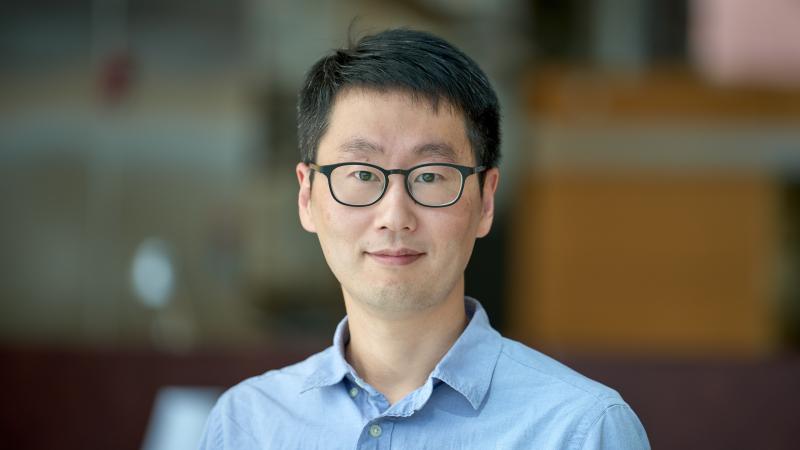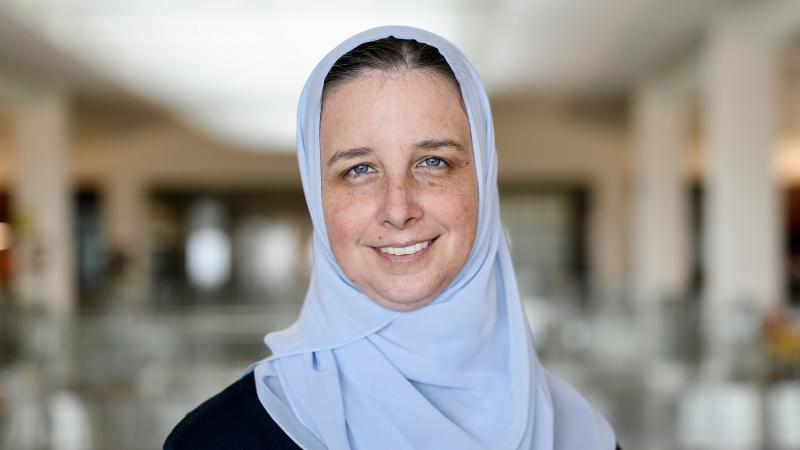By David Murphy
KAUST Professor of Electrical and Computer Engineering Eric Feron received two best paper awards at this year’s 41st American Institute of Aeronautics and Astronautics (AIAA)/Institute of Electrical and Electronic Engineers (IEEE) Digital Avionics Systems Conference (DASC 2022).
Held from September 18–22, 2022, in Virginia, U.S., DASC 2022 aimed to stimulate and inspire pioneering work in digital avionics and related fields. The preeminent research and development conference in digital avionics was centered around the theme “Roadmap for Increasingly Autonomous Systems in Air Transportation.” Feron received his best paper awards in the "Air Traffic Management & Spectrum Management" and "Urban Air Mobility/Advanced Air Mobility" tracks.
His award-winning papers—titled "Optimized Escape Path Planning for Commercial Aircraft Formations" and "Paths Towards Autonomy in Commercial Air Operations"—are co-authored works with his current Ph.D. student and former F-15 experimental test pilot and Boeing 737 pilot, Safa Saber, and his former Ph.D. student and current chief technology officer of the San Francisco-based airplane autonomy startup Xwing, Dr. Maxime Gariel, respectively.
The two papers are related to safety, a topic central to aeronautics, especially commercial air travel. Aviation remains one of the safest modes of transportation, despite heightened media attention around notable accidents and crashes.
“The reason for commercial aviation’s great success with safety is that as accidents have occurred, preventive measures have been put in place, so these accidents never happen again,” Feron emphasized. “Today, backup procedures are available for pretty much any failure that occurs in commercial aviation,” he added.
A passion for aeronautical systems
By examining the efforts of NASA, Cirrus Aircraft, Joby Aviation, Whisk, Xwing, Reliable Robotics, Volocopter, and others, Feron and Gariel have identified several pathways to achieving fully autonomous aircraft—aircraft with the ability to take flight, navigate, and communicate without human input. Regardless of the number of possible paths, the researchers have concluded that safety remains a paramount concern. As a result, the design of multiple failure mitigation procedures in autonomous aircraft is unavoidable.
“Of course, you may add other features to the vehicle, such as electric propulsion, multiple rotors, or composite structures. But then, you must still certify that all the autonomy functions driven by artificial intelligence, vision and even simple automation are safe. There is simply no way around it,” Feron remarked of this research.
Meanwhile, Feron and Saber have been looking at the safety of formation flight as a way to reduce the carbon footprint of airliners. Formation flight is a well-understood mechanism in aviation, which has proven to reduce aircraft fuel consumption by seven to 15 percent. But again, formation flight can only be deployed if it is proven to be absolutely safe.
“Safa is a former military pilot of the absolute highest lineage who has intimate knowledge of not only formation flying but also what to do if, say, one aircraft in the formation loses an engine.
“We have been comparing Safa's intuition with the answers provided by state-of-the-art AI algorithms. It turns out that her intuitive abilities are razor sharp since these algorithms often return the same results as those she imagined. In addition, AI sometimes suggests solutions that she had not considered. We keep the two main commercial aircraft manufacturers, Airbus and Boeing, regularly appraised of our progress as part of the natural exchange I have been entertaining with the industry since 1993,” he noted.
From Toulouse to Thuwal
Feron’s move to KAUST last year follows a recurring theme of instinctive actions that have marked his 33-year career thus far; a career that began in Toulouse, France, and has ended up by the shores of the Red Sea in Saudi Arabia via a selection of foremost U.S. institutions.
With 27 years of teaching and research experience, his research interests center around utilizing elementary concepts of control systems, optimization and computer science to address critical issues in modern aerospace engineering. More specifically, aerobatic control of uncrewed aerial vehicles and multi-agent operations.
With a strong foundation in mathematics, computer science, and operations research, Feron’s Aerospace and Transportation Systems (ATS) research group at KAUST has produced numerous technical contributions in aerospace engineering, automotive engineering, ocean engineering, biological engineering, electrical and mechanical engineering, including robotics and human-machine interaction.
“At KAUST, I am in the process of helping to train a talented and ambitious Saudi workforce capable of meeting the challenges and opportunities faced by the Kingdom today. For that purpose, half the Robotics, Intelligent Systems, and Control Laboratory (that I co-direct with Professor Shinkyu Park) is populated by both female and male Saudi citizens,” he noted.
Feron’s academic career began in Paris, France, where he obtained his B.S. ('89) and M.S. ('90) from École Polytechnique and École Normale Superieure, respectively. Four years later, he completed his Ph.D. ('94) in aerospace engineering at Stanford University, U.S. In October 2021, he joined KAUST from the Georgia Institute of Technology. Before his time at Georgia Tech, he was an active faculty member in the Massachusetts Institute of Technology's Aeronautics and Astronautics department from 1993 until 2005.
“So far, my professional journey has taken me to the École nationale de l'aviation civile, the Georgia Institute of Technology, the Institut Supérieur de l'Aéronautique et de l'Espace, the Massachusetts Institute of Technology, the Office National d'Etudes et Recherches Aérospatiales and Stanford University. I can confidently say that KAUST has brought me as much professional satisfaction as any of these other great institutions, and I hope I have brought the same to all of them,” he concluded.



